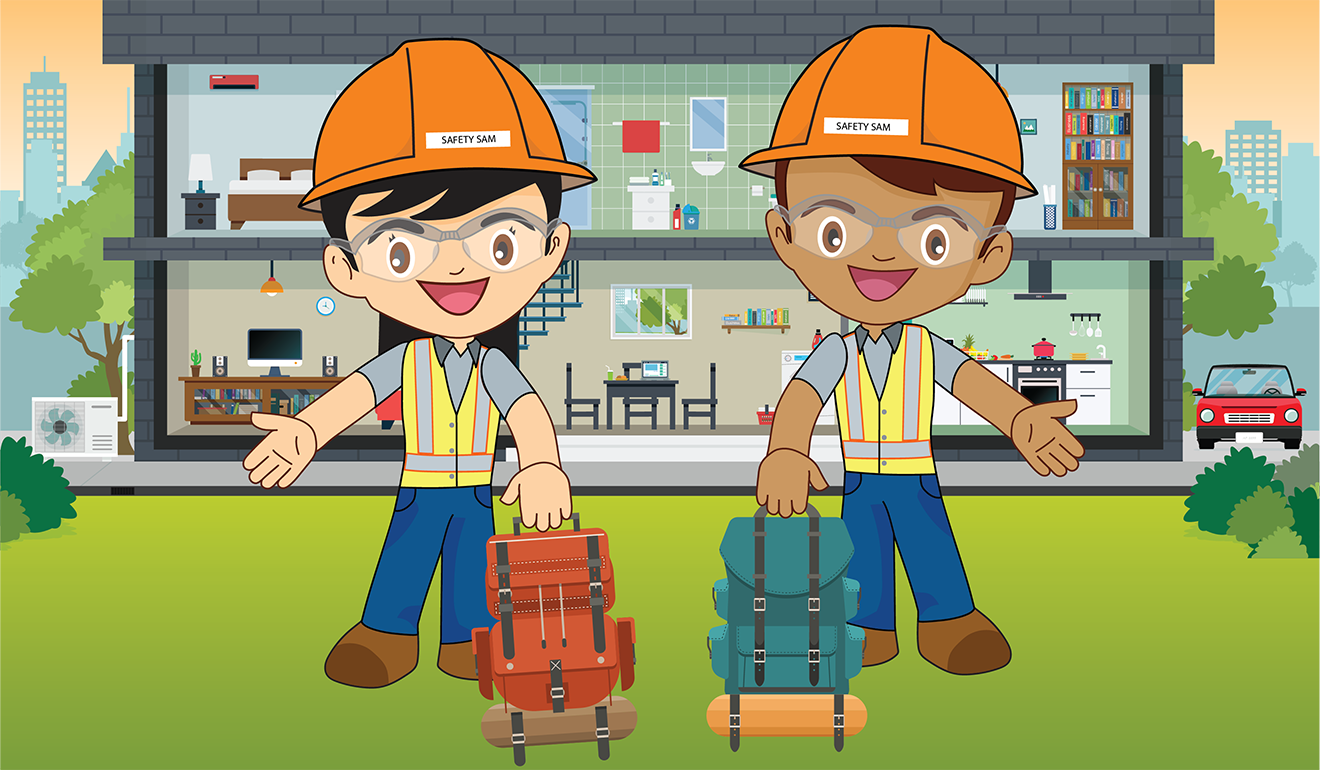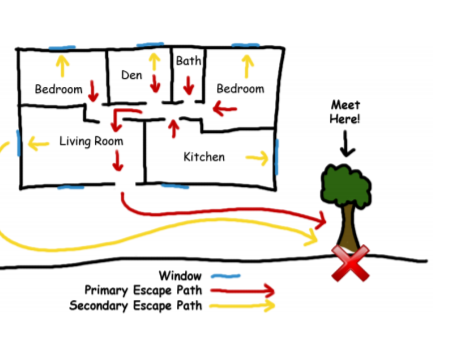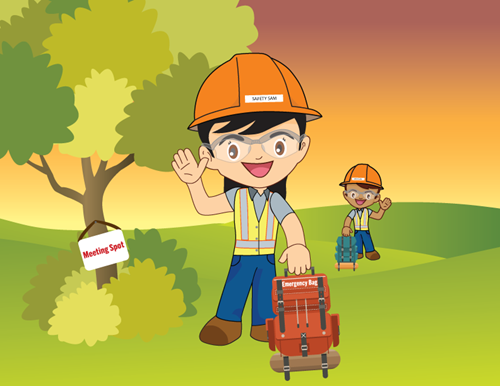
Home Evacuation Planning with Safety Sam
Fire safety is everyone's business. Having a home fire escape plan, and practicing it regularly, ensures your family will know what to do in the event of home emergency.
TL;DR (too long; didn’t read) – PRINT this email and take home to your family!
Safeguard your Family before an Emergency
Check your smoke alarm batteries every month and change them at least twice a year. Replace batteries when the time changes from standard daylight savings each spring and again in the fall. "Change your clock, change your batteries" is a positive theme and easy to practice.
Prepare emergency bags that can be accessed quickly in the event of an emergency. Use this checklist to get started.
Preparation is the Key to Success
Involve the entire family in your Home Safety Planning. Get kids involved by making it fun. We have some Emergency Info Sheets to help get started!
- Walkthrough your home and inspect all possible exits and escape routes.
- Households with children should consider drawing a home floor plan, marking two ways out of each room, including windows and doors.
- Mark the location of smoke alarms in your home with an "S" with a circle around it.
- There should be at least one smoke alarm in every bedroom or sleeping area.
- Make sure each room is identified and the doors and windows - these are your escape routes!
- Agree on a meeting place outside the house and mark it on the plan with a big "X."

Take it One Step Further
When you walk through your plan, check to make sure the escape routes are clear and doors and windows can be opened easily.
If there are infants, older adults, pets, or family members with mobility limitations, make sure that someone is assigned to assist them in a drill or in the event of an emergency. Assign a backup person, too, in case the designee is not home during the emergency
Allow children to master fire escape planning and practice before holding a fire drill at night when they are sleeping. The objective is to practice, not frighten, so telling children there will be a drill before they go to bed can be as effective as a surprise drill.
Put your plan to the test
- Practice your home fire escape plan twice a year, making the drill as realistic as possible.
- When you do your fire drill, everyone in the family should practice getting low and going under the smoke to your exit.
Tips for Fire Evacuation
- Close doors on your way out will slow the fire spread, giving you more time to escape safely.
- Before you open the door, check it with the back of your hand for heat. Start feeling at the bottom and work your way up to the door handle.
- If the door or handle is hot – do not open the door!
- Find a second way out of the room! If there is smoke outside the door, close the door and stuff the cracks to keep the smoke out.
- Go to the window instead. If you can get out of the window, escape that way. If you cannot, open the window and call for help. If smoke comes inside the window – close it!
- In some cases, smoke or fire may prevent you from exiting your home or apartment building. To prepare for an emergency like this, practice "sealing yourself in for safety" as part of your home fire escape plan.
- Close all doors between you and the fire.
- Use duct tape or towels to seal the door cracks and cover air vents to keep smoke from coming in.
- If possible, open your windows at the top and bottom so fresh air can get in.
- Call the fire department to report your exact location. Wave a flashlight or light-colored cloth at the window to let the fire department know where you are located.
- Don't hide! Firefighters can't help you if they can't find you. Make as much noise as you can and let the firefighters know where you are.
- Call 9-1-1 from a cell phone or neighbor's home.
- Get out and stay out. Never go back inside a burning building for anything.
- Account for every family member at the meeting place and report any missing members to the fire department and their last known location.
Tips for Parents & Children
- Tell children that in a disaster, many people can help them. Talk about ways that an emergency manager, Red Cross volunteer, police officer, firefighter, teacher, neighbor, doctor, or utility worker might help following a disaster.
- Teach children to call their family contact in case they are separated from the family in an emergency.
- Help them memorize the telephone number, or write it down on a card to keep with them. Don’t rely on technology during a disaster.

